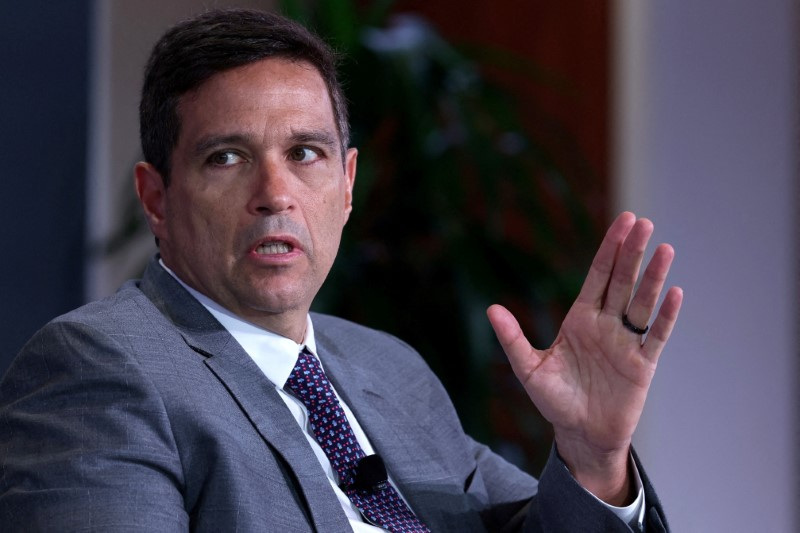Brazil’s central bank focused on reducing risk premium linked to monetary policy uncertainty
2024.08.16 11:17
By Marcela Ayres
BRASILIA (Reuters) – Brazil’s central bank is committed to lowering the risk premium associated with uncertainties surrounding monetary policy, its head Roberto Campos Neto said on Friday as he sets the stage for an imminent leadership transition.
“The premium associated with that has decreased a little bit,” he said during an event hosted by Barclays. “It’s a game of credibility, we need to continue demonstrating coherence.”
Campos Neto, whose term ends in December, emphasized that all of the bank’s board members are delivering the same message: the central bank is data-dependent and will not provide any guidance on future steps, but will do whatever is necessary to bring inflation to the target.
“If hiking rates is necessary, we will do it,” he said. “People are now understanding that regardless of who is in charge of the central bank or who the directors are, the direction is set.”
In recent weeks, monetary policy director Gabriel Galipolo has been leading more hawkish remarks that helped strengthen the Brazilian real following a depreciation spiral against the U.S. dollar.
Sources told Reuters that Brazilian President Luiz Inacio Lula da Silva would soon nominate him to succeed Campos Neto. Lula said on Friday that he did not know for sure if Galipolo would be his pick for the position.
Galipolo has highlighted that, in his view, the balance of inflationary risks is now asymmetric, tilted to the upside.
In the minutes of its latest rate decision, where borrowing costs were held steady at 10.5% for the second consecutive time, the central bank revealed that its board members now see more upside than downside risks to inflation, though there was no consensus on whether the balance is asymmetric.

When asked about his personal opinion, Campos Neto responded that he could not answer the question, noting that not all members’ views are publicly disclosed.
He said upcoming inflation figures should be lower after the 12-month reading showed an increase to 4.5% in July, noting that economic activity continues to surprise policymakers on the upside.








